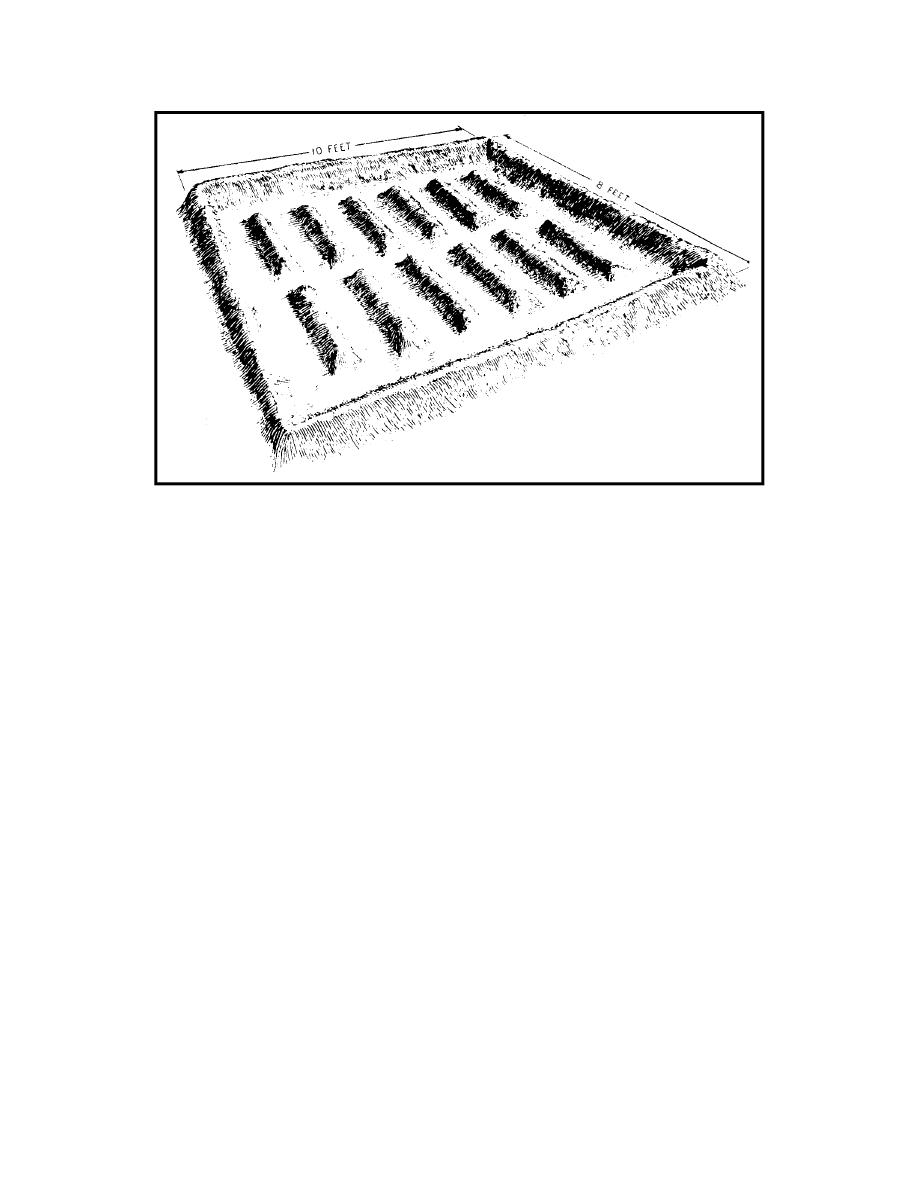
Figure 4-16. Evaporation bed.
(1) Scrap the topsoil to the edges and form a small dike around the bed.
(2) Spade the earth within the bed to a depth of 10 to 15 inches.
(3) Rake the dirt into a series of rows forming ridges approximately six inches
above the depressions. These rows may be formed either lengthwise or crosswise.
b. Operation. One bed is flooded during the day with liquid waste to the top of
the ridges. The liquid waste is then allowed to evaporate and seep into the soil. After
about three to four days, this bed is usually sufficiently dry for respading and reforming.
The other beds are flooded on successive days and the same sequence of events is
followed. Careful attention must be given to proper rotation, maintenance, and usage of
evaporation beds. It is also essential that the kitchen waste be run through an efficient
grease trap before it is allowed to enter the evaporation beds. If these beds are used
properly, they create no insect hazard and only a slight odor.
4-21. BATH AND WASH WATER
Bath and wash water are disposed of in the same manner as the liquid kitchen
wastes. They should pass through a grease trap that will remove the soap before they
enter the soakage pit or the soakage trench. In the field, every device that is used for
washing or drinking should have some type of soakage pit or trench under it. Because
of the large volume of water generated, the area under field showers should be
evacuated to a depth of around four feet and filled in the same manner as a soakage pit
(paragraph 4-4). The top of the pit should be covered with small, smooth stones.
MD0535
4-21


 Previous Page
Previous Page
